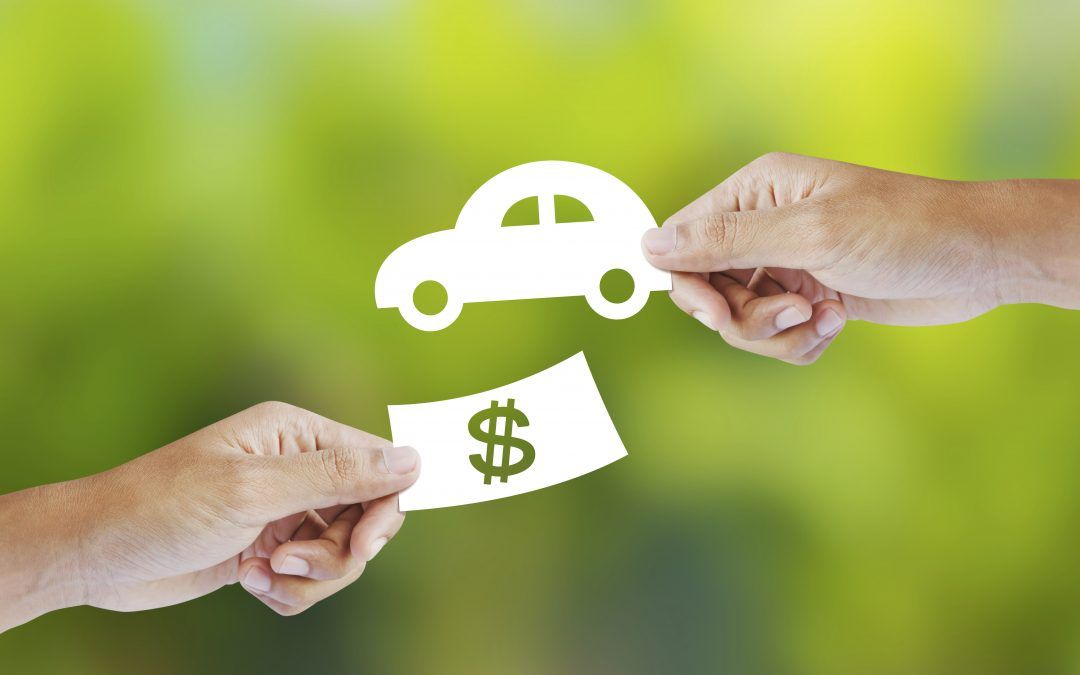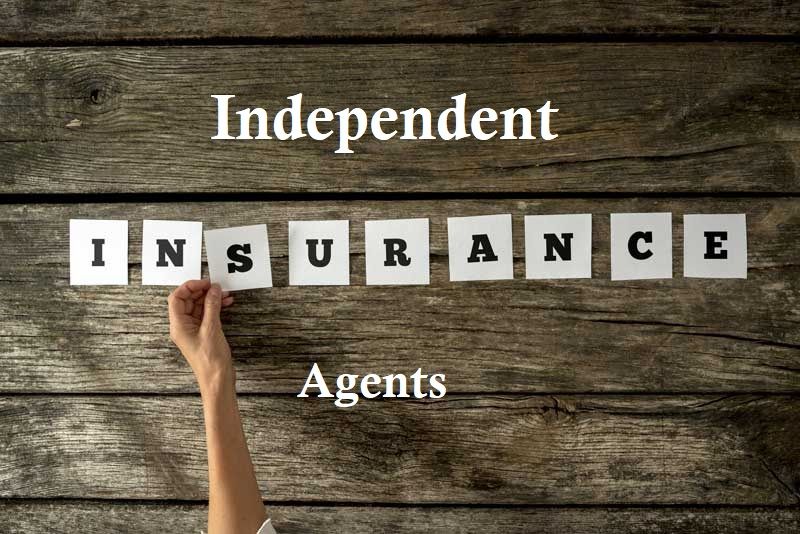Blog
Blog

28 Apr, 2023
Insurance rates set to increase again through 2024 Insurance rates are increasing with all insurance companies in Connecticut and across the country. Historic inflation, weather-related losses and increased volume of claims being reported to insurance companies have reached unprecedented highs. As a result, costs are rising across the country drastically impacting insurance companies and insurance rates for customers nationwide. Your neighbors, coworkers, friends, family, your insurance agents, the people you watch on tv - everyone is seeing large increases on their insurance policies. Your insurance policy is designed to help make you whole again if you experience a loss of your home or vehicle. In the current national environment, you've probably heard that inflation and weather-related events are impacting all industries. This includes insurance. Insurance deals with repairing and replacing, and the cost for repairing and replacing have all increased drastically. Imagine you had a fire where you lost your entire home. The cost of materials needed to rebuild the home are up over 26% over last year. In addition to that, 90% of contractors are short on staff resulting in 88% of firms experiencing project delays. Because of this, it may cost more and take longer for contractors to rebuild your home, which could mean your coverage limit is insufficient. Now think about this, you had a fire where you lost your entire home. Your policy premium was only $1,000 and the insurance company paid out $500,000 for the loss of your home...Where did the money come from to rebuild your home? The insurance company paid for that loss, and you only paid $1,000 for the insurance policy. Insurance companies are taking on a lot more than ever with losses. Insurance companies have to raise rates so that if you have a covered loss, they can make you whole again for that loss. Costs have increased which have caused your home's replacement value to increase, therefore insurance companies are increasing the home's replacement value on your home insurance policy (Dwelling Coverage A), so that your assets are adequately protected. Big natural disasters have always been a challenge for insurance companies, because when those events happen, so many people are impacted at the same time, and losses can be so severe that they really have the potential to bankrupt a company. Now, these natural disasters are happening more frequently and impacting insurance companies severely. With Auto policies, all insured drivers share the increasing cost of insurance as well. That is why your rates tend to go up every time your policy is renewed, regardless of whether any individual factors, like your driving record or location have changed. Insurance costs are rising! Historic inflation, weather-related losses and increased volume of claims being submitted to insurance companies have reached unprecedented highs. As a result, costs are rising across the country impacting insurance companies and customers nationwide. Many companies have announced that they're no longer going to be writing home and auto insurance policies due to the increase of losses and their inability to keep up. Insurance costs are increasing at historic rates from increased claims payouts due to reasons such as: Home insurance These weather events cause insurers to pay out a higher number of claims, which tend to be more expensive and less predictable. As a result, insurance companies have to raise rates to keep pace. Increased cost of materials Increased replacement costs Increased repair costs Increased labor costs Supply chain and shipping delays Auto insurance Vehicles today cost more to repair and replace due to all the added technology and features now found in cars. Higher prices for used and new cars Vehicle thefts are increasing. Theft of vehicle parts are increasing. Example: catalytic converters Increasing number vehicle accidents from distracted driving Increased repair costs Increased costs of replacement parts Increased labor costs Rise in the cost of car parts Increase in rental car costs. The cost of uninsured or underinsured drivers is passed on to the rest of us through higher premiums. So, always make sure you carry excellent coverage on your auto insurance policy, to protect yourself and others. Ways to offset costs Increase deductibles on your home & auto insurance policies A deductible is the amount of money you’re responsible for paying before your insurer covers a loss. Having a higher deductible could lower your rate. And having a lower deductible puts more risk on the insurance company to cover the loss, which can lead to a higher rate for you. A deductible of $2500 is becoming increasingly more common with home policies and $1000 deductibles with auto policies. Inform your agent of any updates to your home : Do you have a new roof on your home? Have you replaced your furnace? Have you updated electric or plumbing in your home? Have you installed a wired-in generator, that goes on automatically during a power outage? Do you now have a security alarm or cameras on your home. Do you have a water/leak detection system or temperature monitoring device? Have you updated a kitchen or other rooms? Have you finished an unfinished area or added square footage to your home? Inform your agent of any vehicle loans that have been paid off . If you have a vehicle loan, most likely you are carrying Loan/Lease (GAP) Coverage on your auto insurance policy. Once a vehicle is paid off, the bank should no longer be listed on your insurance policy, and you no longer need to carry Loan/Lease (GAP) coverage. Banks only notify insurance when the bank information needs to be listed on an insurance policy, but they do not notify when a loan is paid off. It's up to you to notify your insurance of loans you no longer have. Bundle your home & auto together. Do you have your home insurance here, but your auto insurance somewhere else, or vice versa? Let us quote your home AND auto insurance. We represent many insurance companies, so let us do the shopping for you. One of the main benefits of bundling is that companies often offer discounts if you hold several policies with them, so it can save you money. In fact, most carriers now want to insure both policies and will automatically add a multiple-policy discount onto both policies in return, which allows you to save money on your total cost of insurance. Take advantage of additional discounts , such as automatic payments, or the convenience of online self-service portal and paperless, to help ensure that you don't experience any disruptions due to mail delays and you can access your policy easily. Paying a policy in full can save you money. Many carriers offer discounts for auto policies that are paid in full. Paying in full will also save you from having to pay billing fees. Increase Credit Score. Insurance companies do use credit as one of the many rating factors. A higher credit score decreases your car insurance rate, often significantly, with almost every insurance company and in most states. In Connecticut, drivers with no or bad credit pay more on their premiums than drivers with excellent credit. You can also demonstrate financial responsibility by maintaining car insurance with no gaps in coverage. Letting your coverage lapse could result in a higher rate when you get your next policy. Claim Prevention. Numerous recent claims can drive up your premiums. That's one reason why it sometimes makes sense to pay out of pocket rather than file a claim, especially if a claim won’t get you much more than your deductible. There are things you can do to avoid submitting claims. The following are some examples, but not limited to: Safe Driving Safe driving = less accidents = less claims = better premium. Stay away from distracted driving. Consider a telematics program if your carrier offers one. Safeguard your home! Update the roof on your home to prevent leaks & water damage. Repair any damages and ensure that no roof shingles are loose. Trim trees around your home to prevent tree damage to your home. Prevent tree overhang. Update plumbing & electrical in your home to avoid future water or fire damage to your home. Keep your chimney and dryer vent clean. Make sure your home's electrical system is up to date. Take precautions to avoid frozen pipes. Own and learn to use a fire extinguisher. The kitchen is the most common origin of house fires, so having one nearby is advised. Install smoke alarms. These are fire-protection devices that detect and warn homeowners when smoke is detected. Conduct frequent check-ups to review the status of your smoke alarms. Regularly clean your gutters. Blocked gutters can cause water damage to the interior and exterior of your home. Use downspout extenders. This allows you to divert the flow of water away from the structure and foundations of your home. Conduct home repairs promptly. Make minor repairs frequently rather than having a large loss then having to file expensive and time-consuming claims. Adequate Insurance Is Necessary for All. Uninsured and Underinsured drivers cost all of us more in premiums. It doesn’t take much math to conclude that purchasing state-minimum car insurance leaves drivers barely protected. Drivers who buy state-minimum insurance are merely complying with law. They are not protecting themselves or other drivers. This is an incredibly dangerous position to put oneself in. If you have state-minimum car insurance and are deemed at fault in an accident, you may be liable for all expenses not covered by your policy. You may be expected to pay out of your own pocket to cover the difference between your insurance and the other driver’s actual expenses. An attorney or a person injured in the accident could look to you personally to contribute to resolve a claim. The other driver can sue you, seize your assets, and have your wages garnished. Don’t wait for a bad outcome to happen and wish later that you had an adequate amount of coverage.

By PIA
•
21 Apr, 2023
Do I have any control over my auto insurance premiums? I n today’s market, where affordable personal auto insurance seems less and less available, you may wonder if there’s any way to control rising premiums. You’ve already taken one step by choosing an independent insurance agent, representing multiple companies, so we can give you the right insurance to fit your needs. Besides choosing the right insurance company, there are some other tips to help you control the rates you pay for auto insurance. How does insurance work? People buy insurance coverage to protect themselves from potential future loss. In exchange for the payment of a known fee—insurance premium—the policyholder is able to transfer the expense of a loss to an insurance company. Insurance works because it allows one policyholder’s loss to be spread among many policyholders. Insurance companies can operate successfully because it is unlikely that all policyholders will suffer a loss, at least not at the same time. In a nutshell, insurance pays for the losses of a few by the collected insurance premiums of many. How are insurance rates determined? Insurance cannot be priced like most products because insurance companies don’t know what the policies they sell will cost until all of the claims have been adjusted sometime in the future. Rates are dependent on one major factor: the combined cost of all the losses or claims, which is known as the company’s loss experience. An insurer’s loss experience can be expressed as total losses divided by the premiums collected. The companies use their loss experience, supplemented by factors reflecting economic trends, as a guide to the amount they may expect to pay for future claims and still meet the costs of doing business. What types of rating classifications apply to auto insurance? Once the company has determined its estimated future costs, then rates are set based upon a variety of individual factors. In the case of auto insurance, drivers are categorized into different rating classifications based on the historical experience of the losses of that group. Well-documented actuarial studies make it clear that some groups of drivers are more prone to costly accidents than others. Age, gender, experience and marital status are recognized as reliable rate-making criteria. The highest rates usually are assigned to youthful drivers who, as a group, are less experienced than older drivers and have more accidents. Rating territory. States are divided into rating territories, whose boundaries are determined by such considerations as population density, traffic congestion and other factors which affect incidence of accidents. This includes the number of auto thefts in that territory. The disparity in the rates where a vehicle is insured and where it is actually garaged can be significant; a 2016 report by Verisk Insurance Solutions found that an auto insured in Gary, Ind., but garaged in Chicago would be priced 35 percent lower than it should be. Driving record. Statistics indicate that people who have been responsible for accidents or have been convicted of serious driving violations in the past are more likely to continue with those habits and have accidents in the future. Drivers with bad records generally are charged more because of the expectation they will have more claims than the average clean driver. Obeying the rules of the road and driving defensively are your best ways to lower premiums. Drivers have so many potential distractions: eating, drinking, texting, phoning, grooming, smoking, selecting entertainment, programming electronic maps, managing children or animals, etc. It has become very difficult to stay focused on the deadly serious job of driving a vehicle without distraction. We all need to remind ourselves of this grave responsibility every time we get behind the wheel. Even though it may be tempting not to report violations and accidents when applying for insurance in order to avoid higher premiums, it is important to know that they nevertheless will show up on the motor vehicle record, which insurance companies monitor. Use of car. Autos that are regularly driven to and from work usually are more vulnerable to accidents than autos used only for pleasure purposes, because they are frequently exposed to heavy traffic conditions. The same is true for autos used for business purposes throughout the day. You may want to consider driving the lowest-rated auto (i.e., an older auto without physical damage coverage) for activities that have a highest rate (i.e., business use or long-distance commuting to work). The number of miles driven in a year has an impact on the rate. Type of car. Certain types of autos cost more to repair or to replace, based on a variety of factors, including ease of repair, cost of parts and the original price of the auto. These factors are taken into consideration when determining the premium. New autos, for example, are more costly to repair or to replace than older, less-expensive autos. Coverage. Some people prefer to assume more of the risk of loss on their autos and save on premiums. It may make sense for you to remove collision insurance on older vehicles or increase your deductibles on newer vehicles. A common rule of thumb is that for vehicles more than 10 years old, you might consider removing collision coverage. However, to obtain glass coverage on a vehicle, you would have to maintain other-than-collision (comprehensive) coverage. Timely premium payment. Always pay your premiums on time. Issuing cancellations, processing late payments and then issuing reinstatements add significant costs to the servicing of auto insurance policies. Most insurance companies have a low tolerance for late payments under policies that are eligible for their preferred pricing. Credit management. Many insurance companies have established a link between a person’s credit history and that person’s probability of having an auto claim. As strange as this may sound, there does appear to be an objective basis for using credit analysis, known as insurance credit scores, to predict a class of policyholders that will have greater-than-average loss experience or less-than-average loss experience. Managing your credit will help to lower rates on your auto insurance. Discounts. There are some standard discounts, such as those for taking a driver-training course or a defensive-driving course, qualifying as a good student, insuring multiple vehicles on the same policy, having vehicles equipped with certain safety equipment (i.e., anti-theft devices, passive restraints or anti-lock brakes). Some insurance companies offer a discount for purchasing your homeowner's policy from the same company. The selected premium payment option may also reduce your premium. Telematics. Telematics describe technologies directed at communicating with a motor vehicle, which has led to “usage-based insurance” programs. Under these voluntary programs, consumers consent to install sensor devices in their cars that catalog data on driving habits and provide discounts to those found to be more careful drivers. Some subscribers may find that UBI programs are helpful in correcting hazardous driving habits that were previously unknown to them; either about themselves or other drivers in the household. On the other hand, some people may find this kind of data collection too intrusive for their comfort. State Minimum Coverages are NOT the answer. Liability insurance is mandated by law in almost every state, and each state outlines the minimum amount you have to carry. State minimum requirements are basically enough for you to register a vehicle in Connecticut, but often not enough to cover even minor accidents. The Insurance Information Institute recommends that you carry at least $100,000 of bodily injury protection per person, $300,000 per accident and $100,000 for property damage (known as 100/300/100). These are the maximums that the insurance company will pay out in any single accident. Be sure to remember that liability insurance doesn't pay for damages to your own car. It also doesn't pay for your own medical expenses if you're injured in an accident. Liability insurance covers only damage you cause to other vehicles and property, as well as medical expenses for those you injure. Typically, increasing the liability limits doesn't cost much more. No matter what coverages your state requires, you should examine your needs and buy a policy that is right to protect yourself. Housatonic Valley Insurance Agency no longer writes auto policies with coverages lower than 100/300/100, so their insureds are better protected in the event of an accident. If you have assets to protect and a car that you can't afford to replace, it's best to increase your limits and purchase a full coverage policy to provide greater protection. Our agency would like to help you take advantage of every possible means of making your auto insurance more affordable. So, please, don’t hesitate to call us for a policy review.

By Housatonic Valley Insurance Agency
•
29 Dec, 2020
Housatonic Valley Insurance Agency (HVI) has been a proud part of the New Milford community since 1931 . HVI was one of the founding members of the New Milford Chamber of Commerce later that year. Over these almost 90 years we really have been blessed and fortunate to be such a staple in the community. Our beautiful office is located right on New Milford Green, overlooking the Gazebo and the tank. Here's an article about us from the New Milford Spectrum: 'It's like family' at Housatonic Valley Insurance
VISIT US
,
This is a placeholder for the Yext Knolwedge Tags. This message will not appear on the live site, but only within the editor. The Yext Knowledge Tags are successfully installed and will be added to the website.
HOURS
This is a placeholder for the Yext Knolwedge Tags. This message will not appear on the live site, but only within the editor. The Yext Knowledge Tags are successfully installed and will be added to the website.
Monday
Tuesday
Wednesday
Thursday
Friday
Saturday
Sunday
This is a placeholder for the Yext Knolwedge Tags. This message will not appear on the live site, but only within the editor. The Yext Knowledge Tags are successfully installed and will be added to the website.
HOURS
This is a placeholder for the Yext Knolwedge Tags. This message will not appear on the live site, but only within the editor. The Yext Knowledge Tags are successfully installed and will be added to the website.
CONTACT US
This is a placeholder for the Yext Knolwedge Tags. This message will not appear on the live site, but only within the editor. The Yext Knowledge Tags are successfully installed and will be added to the website.
We do NOT accept unsolicited
Telemarketing calls.
Hi. Do you need any help?
Privacy Policy
| Do Not Share My Information
| Conditions of Use
| Notice and Take Down Policy
| Website Accessibility Policy
© 2024
The content on this website is owned by us and our licensors. Do not copy any content (including images) without our consent.


Share On: